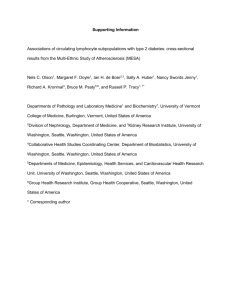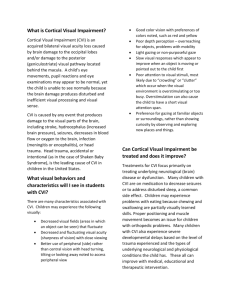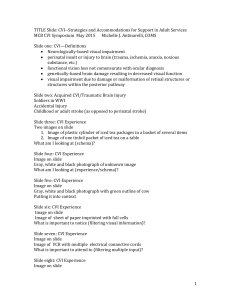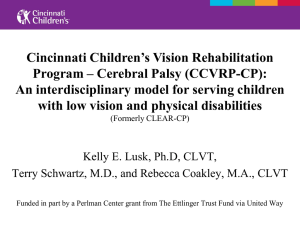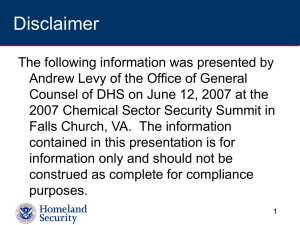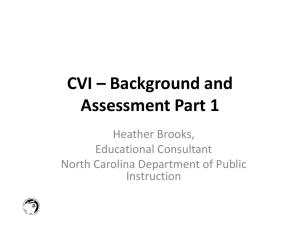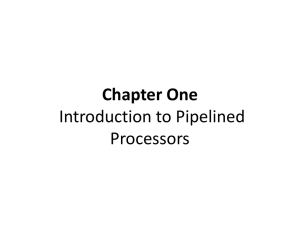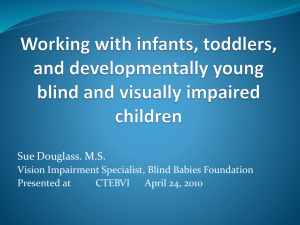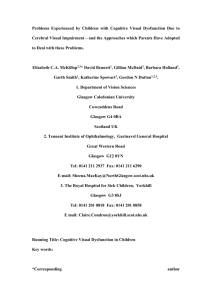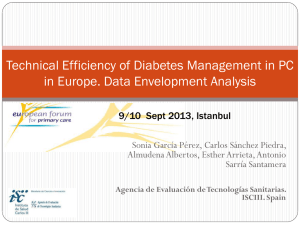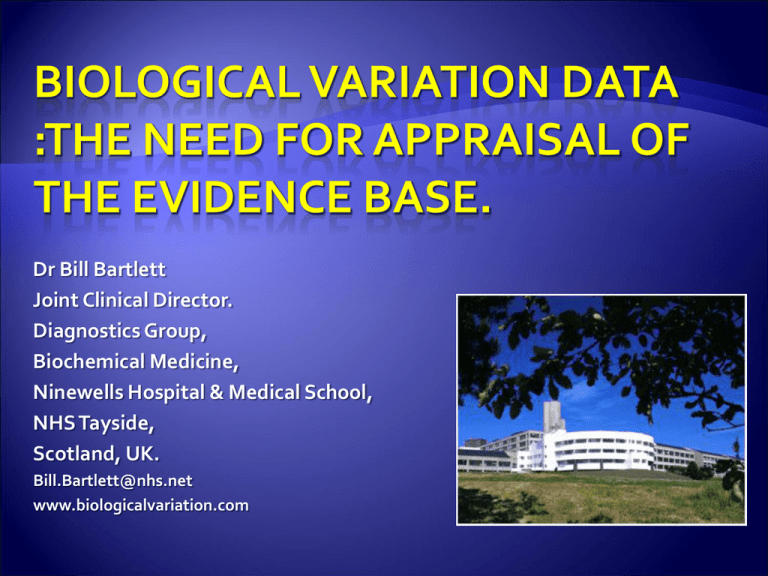
Dr Bill Bartlett
Joint Clinical Director.
Diagnostics Group,
Biochemical Medicine,
Ninewells Hospital & Medical School,
NHS Tayside,
Scotland, UK.
Bill.Bartlett@nhs.net
www.biologicalvariation.com
Analytical variance (CVA ).
Within Subject biological variance (CVI ).
Between Subject biological variance (CVG ).
s2Total = s2Analytical + s2Individual + s2Gro
CVTotal = CVA + CVl + CVG
Biological Variation Serum Creatinine: Average within subject (CVI) = 4.1%
Gowans & Fraser. Ann Clin Biochem 1988:25:259-263
Setting of analytical goals (CVgoal).
Quality specifications for :
total allowable error (TEA)
Bias (BA )
Evaluating the significance of change in serial results
(RCV).
Assessing the utility of reference intervals (Index of
Individuality).
Assessing number of specimens required to estimate
homeostatic set points.
Choice of specimen type.
Timing of specimens.
eGFR > 60 in a 30 year old white female: Changing renal function?
These fundamental
data have many
applications that
under-pin our practice!
Are These Not
Reference Data?
Do we have
confidence in the
data and understand
their limitations?
Rodin’s Thinker
Burrell Collection Glasgow
Are current published
biological variation
data fit for purpose?
Are these data valid and robust?
Confidence in method of their production and analysis.
Contemporaneously valid.
Can I apply them to my practice?
Population
Demographic
Diseased v Well
Method
Time Frame
What are the implications of error
Grasbeck & Saris 1969
Introduced the term “reference value”:
The mode of generation of such values is known
with respect to:
Selection of subjects
Assessment of state of health
Population characteristics, age, sex,
Specimen collection and storage
Analytical technique and performance characteristics
Data handling techniques.
40 years of
data
The Literature
• Do the data travel
through time
• Method
developments
Quality
Commutable
Translated
into
databases
• Enough reported
detail.
• Good Design?
• Population
demographics.
• Healthy?
• Diseased?
• Excellent
Resources
• Granular enough?
• Data archetype
required?
• 319 Constituents:
• 90 entries based on 1 Paper
66 quantities 34 diseases with 45 references.
“For the majority of quantities studied CVI of same
order as diseased. “
Disease specific RCVs may be necessary in some
cases.
Effect of variability in variability not quantitatively
studied.
“Heterogeneity in study designs and methods
compiled”
Data Quality?
Experimental
Design
Data Analysis
Assay
Characteristics
What is the uncertainty?
What are the quality standards for BV Data?
Standard for
Production
• Experimental Design
• Data Analysis
Standard for
Reporting
• Enable Critical Appraisal
• Enable Commutability
Standard for
Transmission
• Data Archetype?
• Commutability & Valid
Application
“Our hope is that the comparability of such
data might be provided by use of a
common study design and analysis of
data”
Fraser & Harris 1989
Crit Rev in Clin Lab Sci. 1989;27(5)409-437
www.biologicalvariation.com
Generation and Application of data on Biological Variation in Clinical Chemistry: Fraser CG, Harris EK. Crit Rev Clin Lab Sci 1989:27,(5), 409-435.
Optimal Conditions Precision
Purpose of study
Experimental Design
Characterisation of the methods
Data analysis
Confidence limits
1.
2.
Define the purpose for which they are to be used.
Only meaningful and transferable if defined for
the population or individual in terms of:
Inclusion and exclusion criteria
Intake of food & drugs
Physiological and environmental conditions
Specimen collection criteria
Performance characteristics of the analytical method
The statistical methods used for estimation of the limits
www.biologicalvariation.com
www.biologicalvariation.com/Tools.html
CVI 4% to 103% with central tertile 28% to 48%
40 studies with confounding factors: Time period over which samples were collected
Study design
Type of sample and concentration range studied
Population studied and state of health
Preanalytical factors
Poorly described statistical methods
Braga et al Clinica Chimica Acta 2010;411:1606-1610.
Highlights the need for this approach
“Nine recruited studies were limited by choice of analytic
methodology, population selection, protocol
application and statistical analysis”
Issues: Heterogeneity in experimental model
Length of study inappropriate (3 days to 6 months)
Methods with differing specificities
Statistical methods not specified
These data have associated metadata that
should remain associated with them to enable
appropriate application.
Enable comutability
Analogous to a reference value.
Concept of Archetypes may be relevant
Population
Demographic
Method
BV
Data
Published
Reference
PUBMED
Measurement
SNOMED-LOINC
Disease
SNOMED
ISSUES
Non-complex v complex
molecules.
Relativity of normality.
Improved assay specificity.
HbA1c
PTH
Creatinine
Data in chronic stable
disease “often can be
considered constant
over time and
geography”
“Same order of
magnitude in disease
and health”
Within Subject Variation (CVI,%) for Serum
Sodium and Urea
No. of
subjects
11
11
62
11
10
14
111
37
274
15
9
15
16
Time
Sex
status
Na+
Urea
0.5 h
8h
1d
2 weeks
4 weeks
8 weeks
15 weeks
22 weeks
6 months
40 weeks
2d
6 weeks
8 weeks
m
m
H
H
H
H
H
H
H
H
H
H
RF
HP
DM
0.6
0.5
0.6
0.7
0.9
0.5
0.6
0.5
0.5
0.7
0.8
0.8
0.8
2.2
6.0
4.8
12.3
14.3
11.3
15.7
11.1
11.2
13.9
6.5
14.5
13.0
Fraser 2001
m
m
F
m
m
-
F
m
PTH Assays through time
1970’s
• C-Terminal RIA
1980’s
• Development of IRMA assays
1990’s
• Nichols institute Ruled the world
• Range of other intact assays with antibodies against a variety of epitopes
2004
• Bioactive PTH Assays with n-terminal specific antibodies
If clearance of fragments is not identical in all
patients and non diseased patients the apparent
biological variation will vary and be assay
specific.
Assay specificity is an important BV qualifier
Historical data may not be always applicable.
Study Year
Subjects
(M:F)
State of
Health
Frequency of
Sampling
Number
of
Samples
Method
1
1985
10(6:4)
Healthy
7D
11 - 27
IE
2
1989
8(?)
Diabetic
3-4 D
6
Endosmosis
3
1993
73(?)
Diabetic
1M &3M
4
Affin Chrom
4
1994
29 (?)
Diabetic
3 M & 12 M
?
HPLC IE
5
1998
12(7:5)
Healthy
15 D
10
HPLC IE
6
2000
11(0:11)
Healthy
7D
5
HPLC IE
7
2000
47(?)
Diabetic
6M
4-7
Imm Turbid
8
2002
45 (45:0)
Diabetic
7D
12
HPLC Affin
9
2010
38(24:14)a
Diabetic
1Y
5
HPLC IE
H = Healthy
Stud
y
CVI
1H
1.8
D = Diabetic
Analytical Desirable Bias
CVG
Goal
TEA(%) Target
0.9
10.
8
22.6
10
3D
4.2 & 7.1
2.1 & 3.5
13.0 & 22.5
3 & 10
4D
2.4
1.2
7.4
1
5H
1.9
6H
7D
<0.7
7.9,5.4, 3.3
3.9
< 0.35
3.8,2.7,
1.8
8D
1.7b
0.8
9D
4.8
4.8
3.3
1.4
2.8
1
7.3
0.8
5.8
4.8
2D
6.8
3.6
RCV
N for Homeostatic
Setting point
1.8
5.7
0.8
2.9
24.3,16.7,
11.8
12,6,3
14.9
4
1
Jaffe methods
Enzymatic methods
HPLC
ID-MS – reference method
Review of the sedimentation
process which is caused in
normal urine by picric acid
and a new reaction of
creatinine
By M. Jaffe (Submitted to the
editor on 26th June 1886)
Many points of reference.
International Standards
State of Health
CVI
Number of
Subjects
Length of
Studies
(days)
Number
Samples/Sub
Healthy Median?
4.3
CRF
5.3
17
21
8
Type 1 DM
5.9
27
56
8
Impaired renal
function
6.9
9
2
11
Type 1 DM
6.5
11
56
8
Post renal transplant
11.5
41
90
8
Acute MI
13.4
20
4
19.5
CKD children
13.0
54
540
9
Ricos et al Ann Clin Biochem 2007;44: 343-352
Quantity
Units
Group
Mean
CVI
CVG
Index of
Individuality
Serum
Creatinine
µmol/L
Male (7)
83.9
3.4
6.8
0.54
Fraser
µmol/L
Female (8)
71.4
4.9
11.8
0.41
Fraser
µmol/L*
Whole (15)
77.9
4.1
14.1
0.29
Fraser
µmol/L
?
?
5.3
14.2
0.4
BioV Site
4.7
14.4
0.33
Reinhard
et al
µmol/L** N= 20
77
Male (7)
Female(13)
* Jaffe
** Enzymatic
CVI = 5.3 %
CVG = 14.2%
CVA =2.7%
M
G
F
Route Forward?
www.biological variation.com
•
•
Need to assess on a case by case basis.
Questions around uncertainty.
• What are the implications for their application?
• Can the impact of uncertainty be quantified and reduced where
necessary.
Accepted standard needed for their production.
• Critical appraisal checklist required to enable veracity of
existing and new publications to be established.
• Archetype for transmission.
Questions to be addressed by the EFCC biological Variation
Working group
•
Kinoull Hill, Perth Scotland.
© Ruth Bartlett

